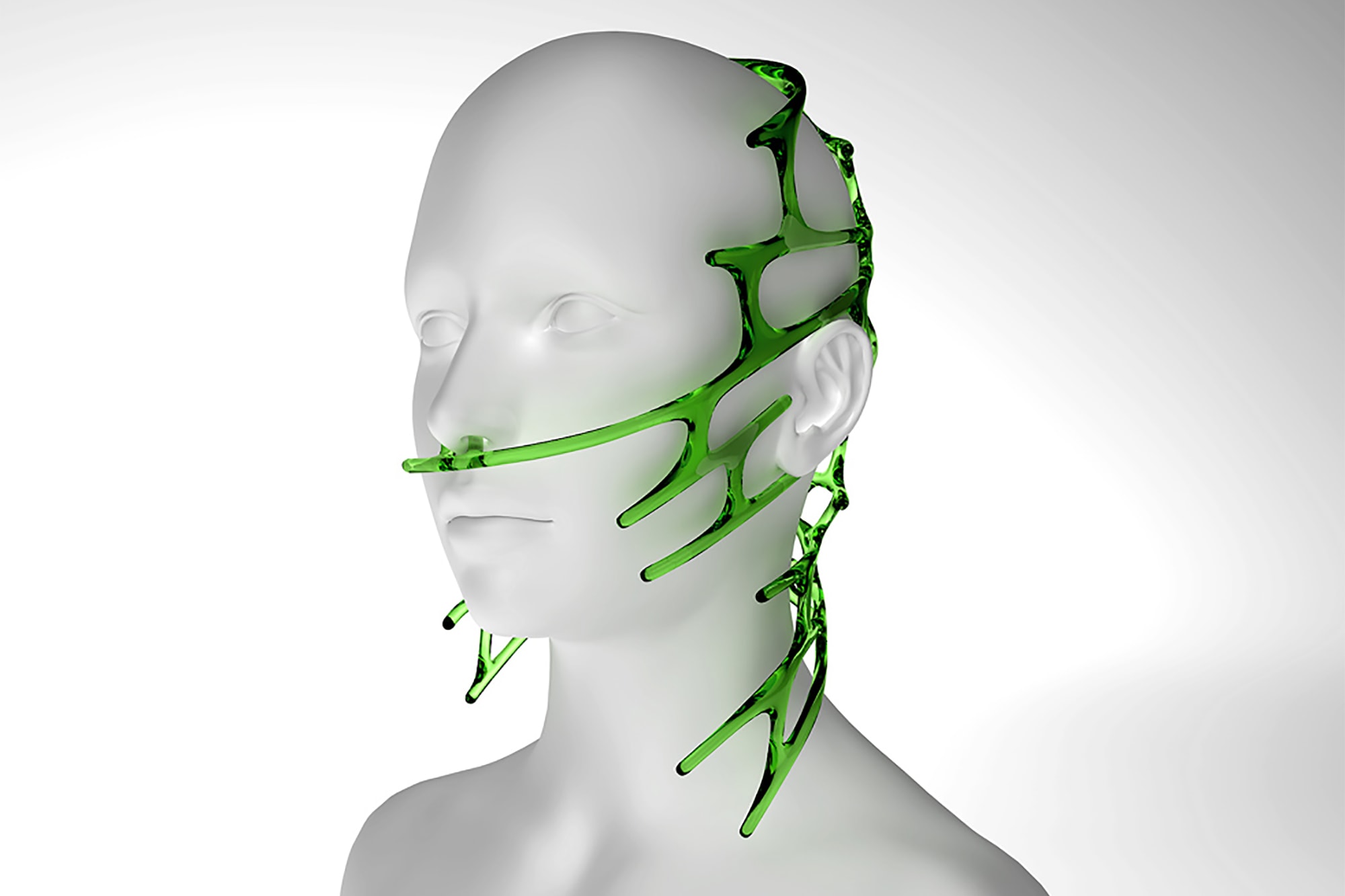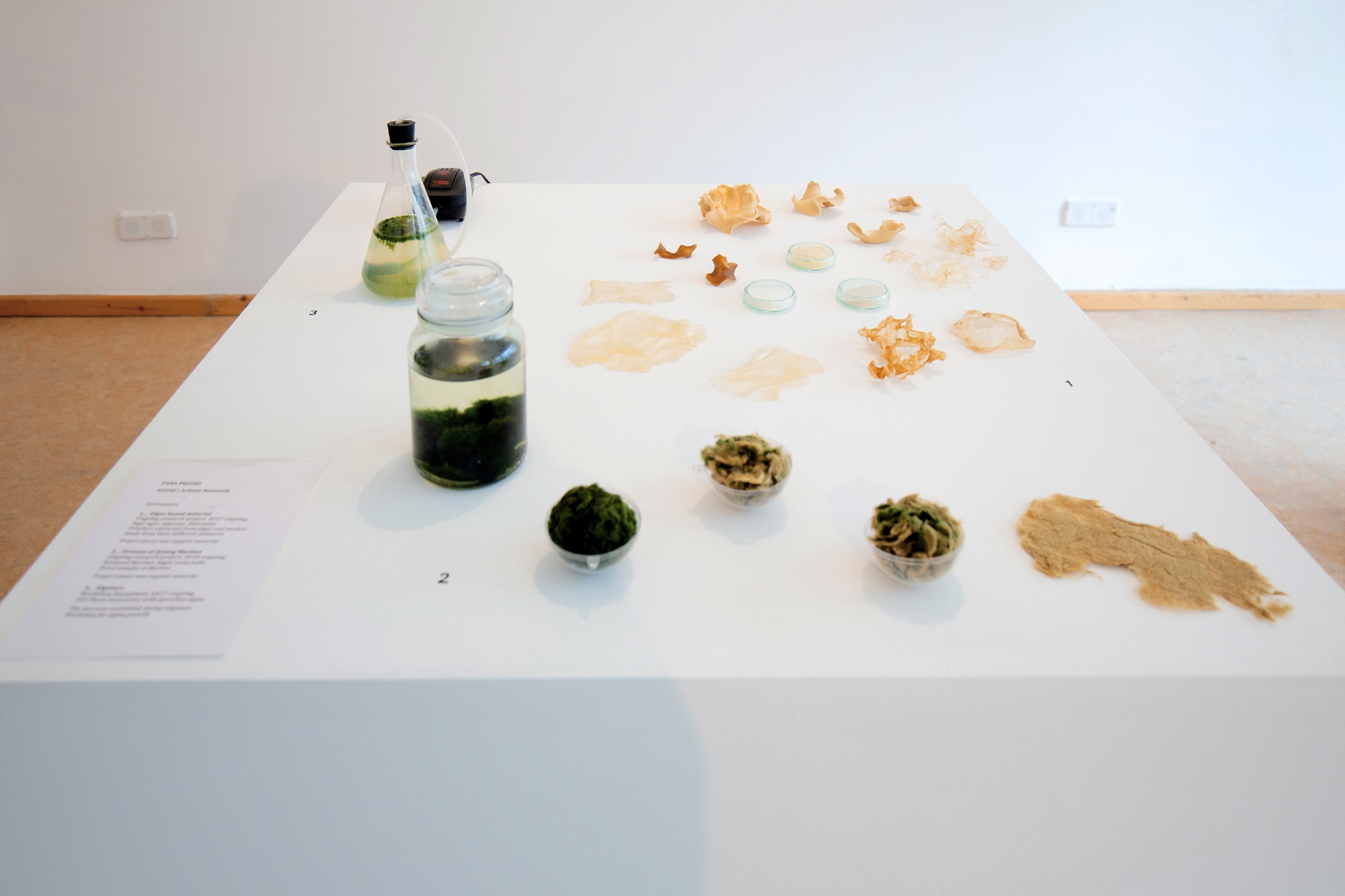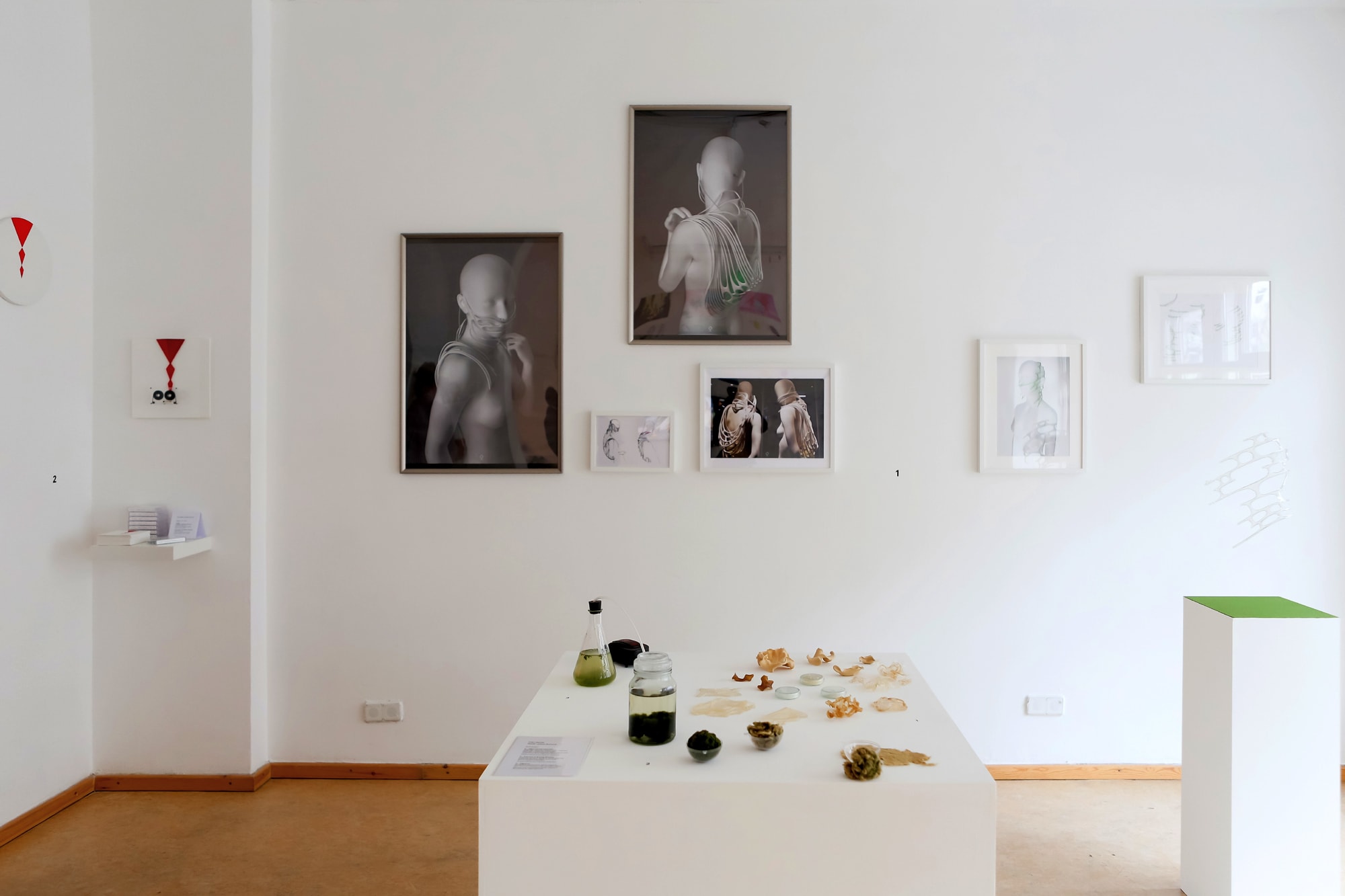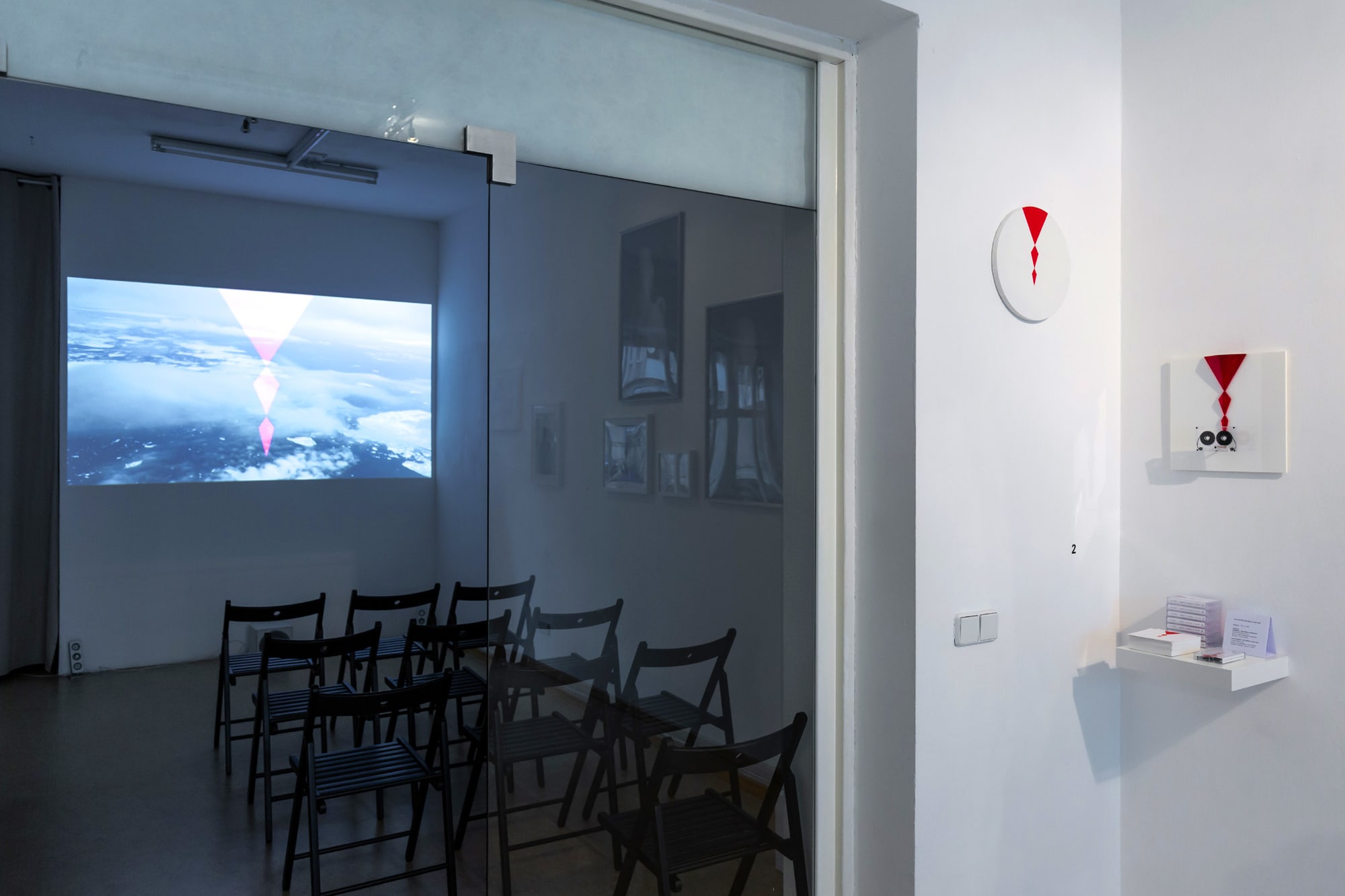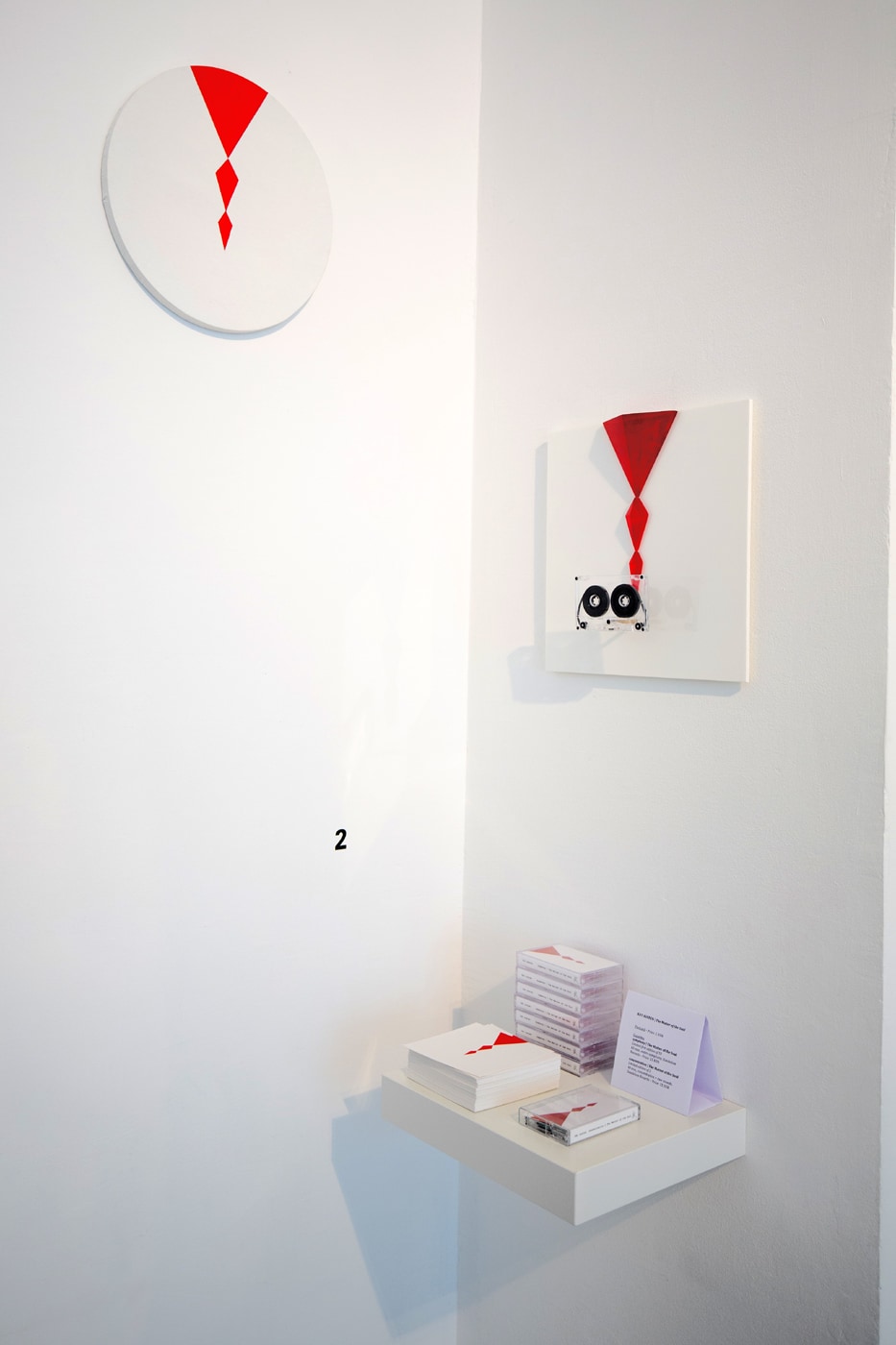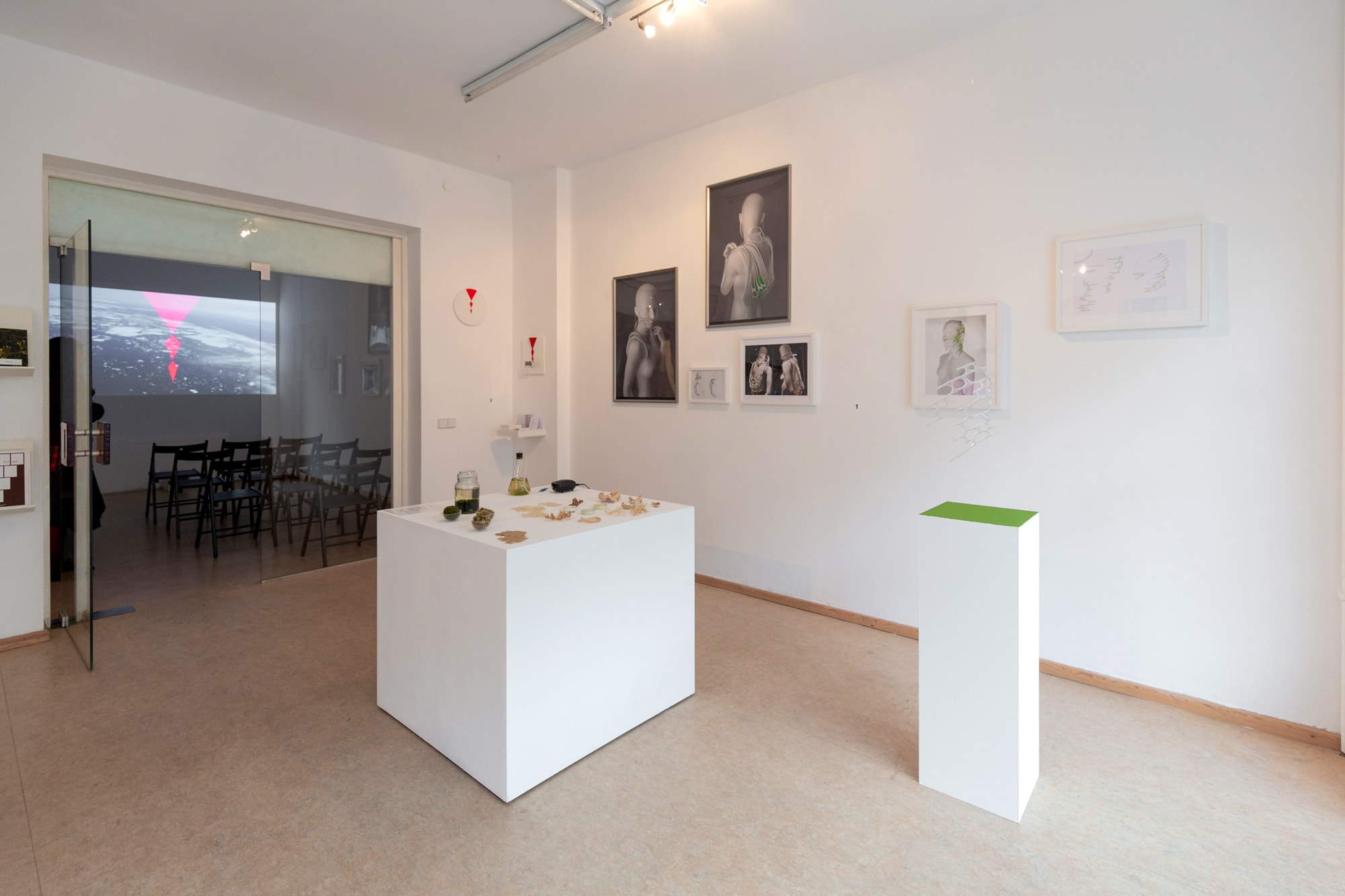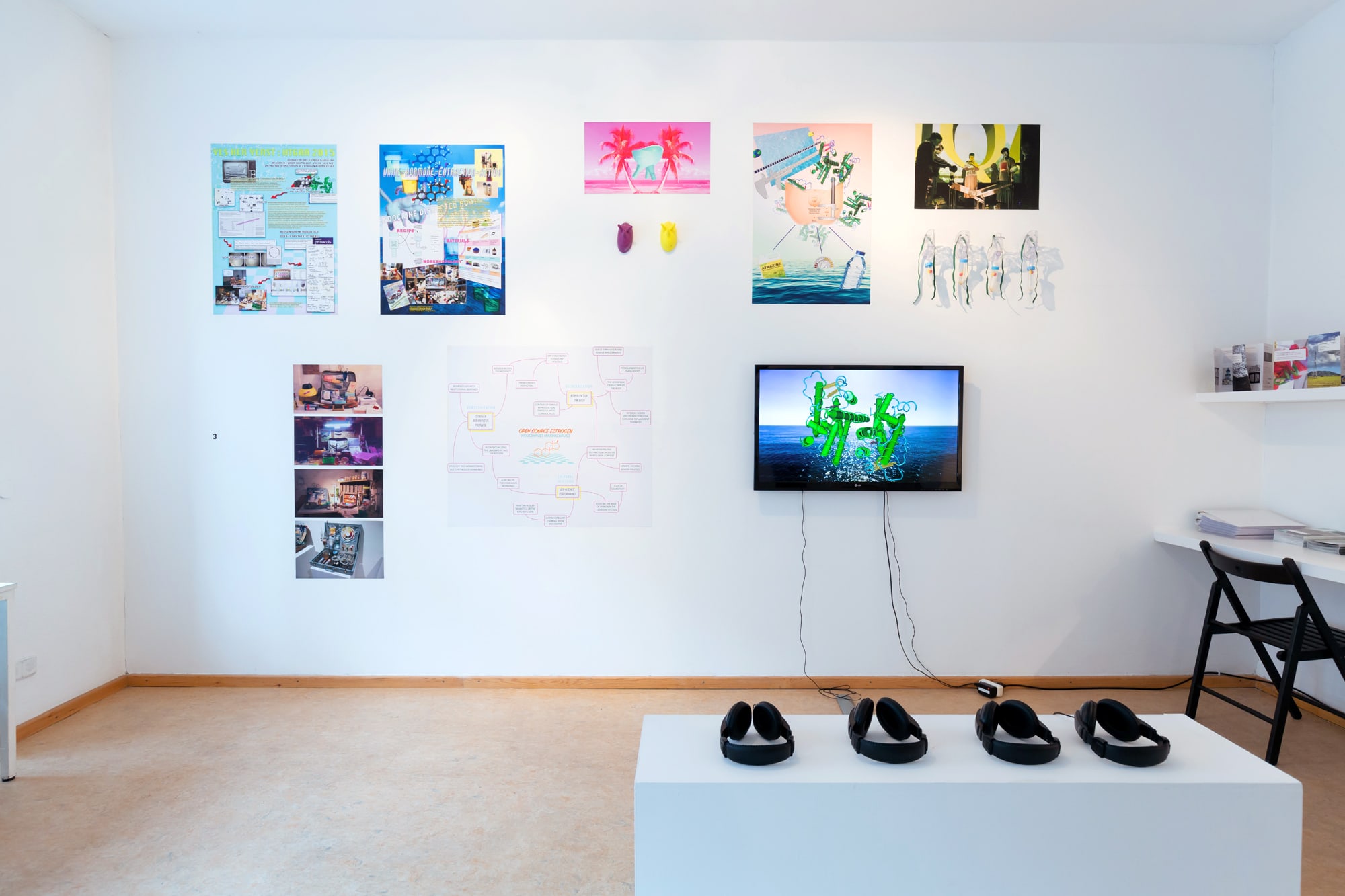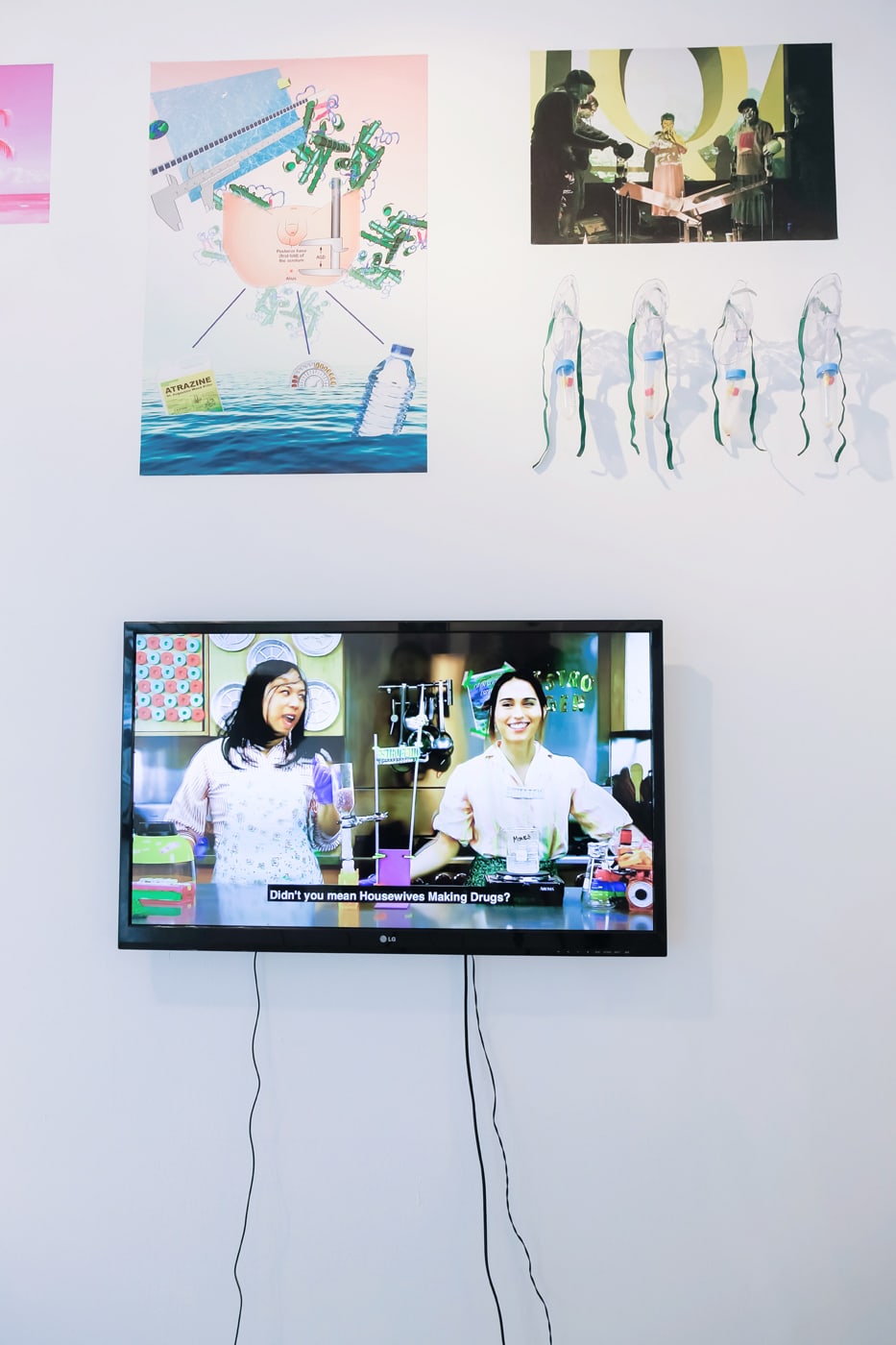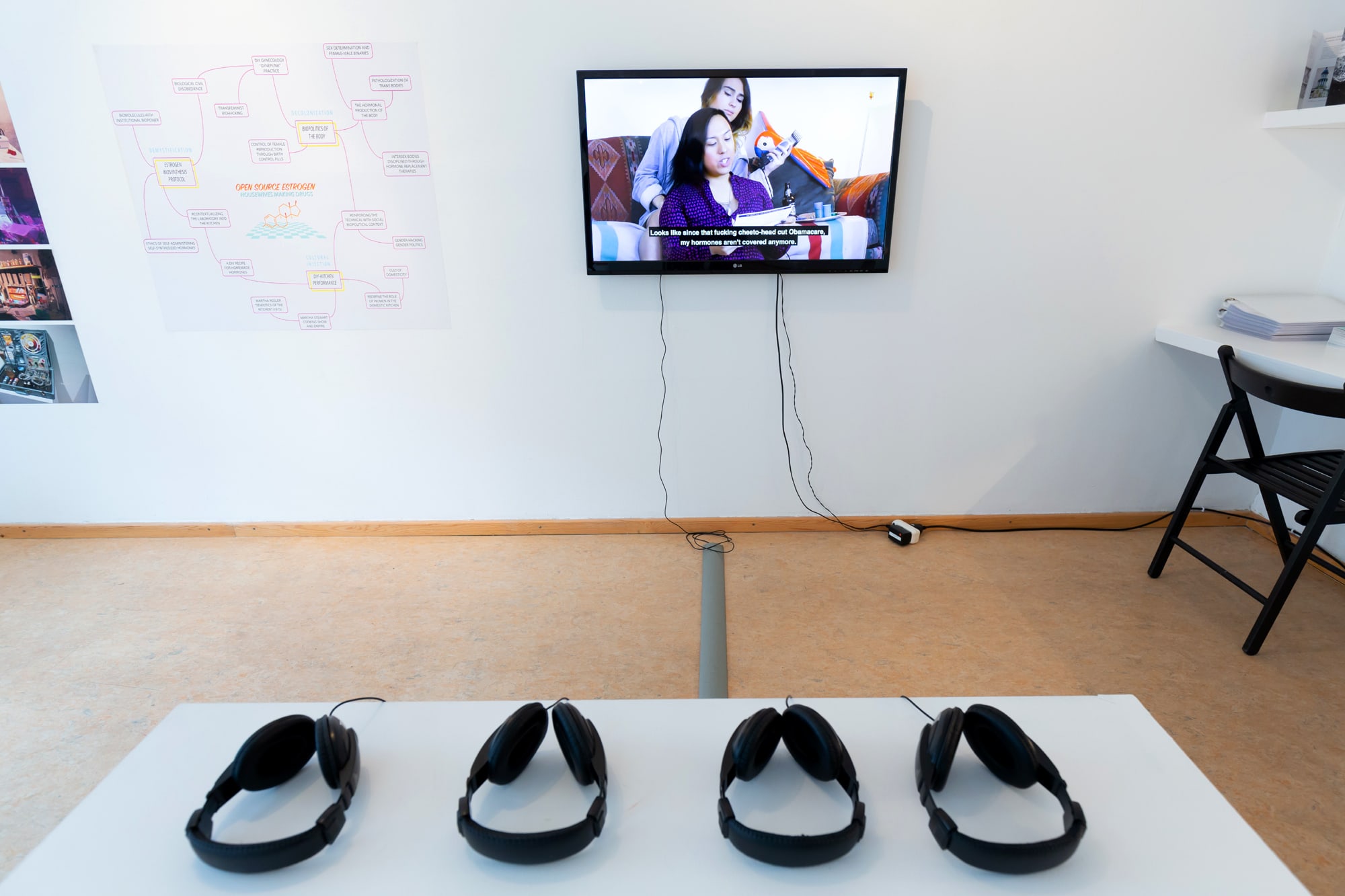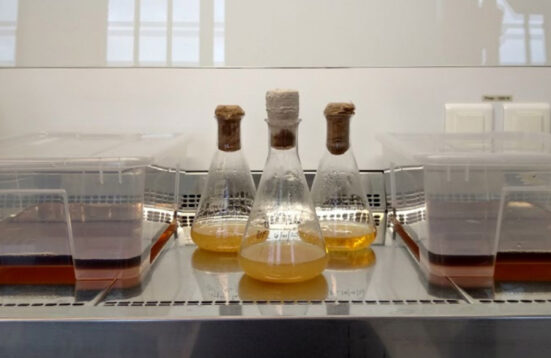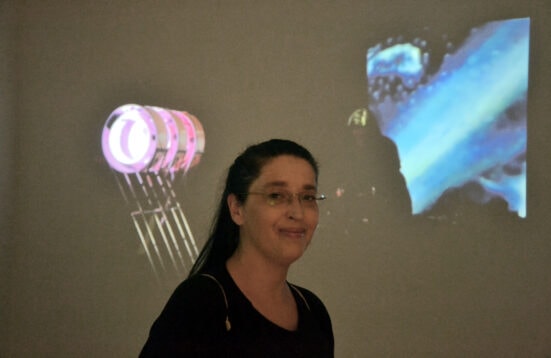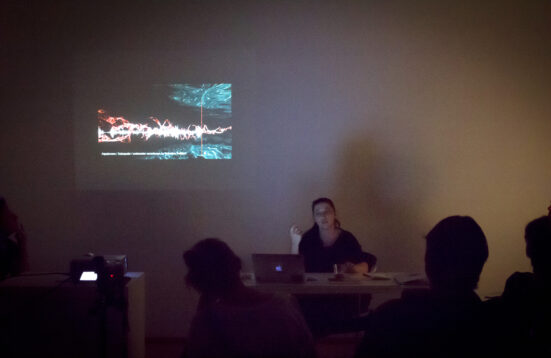Watery Ecologies. Artistic Research
Kat Austen | Mary Maggic | Fara Peluso
Water is the foundation of life, making up 60% of our body. Water-born organisms produce much of the planet’s oxygen. Meanwhile human activity fills waterways and oceans with plastics, industrial waste and diverse chemicals, effecting the metabolisms of most living creatures, ourselves included. This exhibition presents art projects on water, life and chemical disruption whose research transcends the boundaries between art and science. The artists pursue research in biology, chemistry and ethnography with distinct and radical DIY methods. Diverse approaches to the hydrosphere, the sum of the planet’s water, explore the foundations of life and the threat of human impact on both the environment and our own bodies.
Artist and designer Fara Peluso’s long-term research focuses on potential uses for algae as an environmental regulator, source for sustainable materials, and aesthetic catalyser of biophilia. She proposes a closer relationship between humans and algae as an answer to our current environmental crisis. Her research and practice combine working with biotechnologists and DIY scientists in speculative and critical design to produce a myriad of innovative design and artistic solutions.
Her project VIVA (2016, right side of wall) initiates a speculative symbiotic relationship between humans and algae through an accessory that you wear around your head. Filled with algae the device has a mouthpiece that enables an inter-species exchange of respiration, based on the oxygen/carbon dioxide cycle. The 3D prototype (hanging from the ceiling) shows a striking mesh with a biomorphic structure.This collaborative relationship is explored further in WeaReactor (2017), developed in collaboration with BioArt Laboratories in Eindhoven, NL (left side of the wall). Here the symbiosis resembles a cyborg-like being as the human body appears to melt together with the algae, expressing a biophilic performative character (compare also the drawings). Demonstrating interspecies relationships, this wearable speculative device seems to belong to a posthuman nomad, wearing the accessory as an eternal survival bag like a mobile algae station. Peluso refers to the biochemical and the ethical: “I create fictional artefacts”, says Peluso, “that tell stories of possible future scenarios about the quality of our lives, attitudes, and choices.”
On a plinth we encounter Peluso’s design work with Algae based Material (2017-ongoing), giving the viewers an insight into the complex world of these one-celled organisms. She has produced various bio plastic materials from different forms of algae, each having its own materiality and texture. Next to Marimo seaweed and algae moss balls there is also a DIY Photo bioreactor growing Spirulina algae, which Peluso has used for her Algature workshops.
The Matter of the Soul (2017-ongoing) examines the impact of climate change in the Canadian High Arctic through sound composition, sculpture and performance. Here, Kat Austen, an artist with a PhD in Chemistry, combines scientific knowledge, hacked equipment and ethnographic research with a strong aesthetic approach. Crucial to the work is the lived experience of being in a time of melting in the Arctic.
The Matter of the Soul exists in myriad forms, as audio-visual installation (a one-hour symphony in the back room), live performance, sound piece, objects and images. Austen aesthetically meanders her Arctic research into different artistic formats: the round canvas and the relief sculpture (front room) show a red geometric motif on white background – a triangle of the Arctic, a recurring form and abstraction of the process of dispersal, which is the central subject of the symphony. The cassettes contain the entire symphony or just one part, concentration.
Her audio-visual installation The Matter of the Soul | Symphony (back room, 58 min.) shows sequences of Austen’s travels, by plane or sea, views of water and ice, complemented by found footage. The compositions contain field recordings of acidity and salinity, affected by arctic ice melt, made using pH and conductivity meters altered to make sound. There are samples from interviews with visitors to and inhabitants of Baffin Island and Resolute, Canada.
Austen works with the classical four-part symphony structure, which she strongly challenges in content and form. The titles of the four parts refer to scientific terms: 1. biphasic (two phases), 2. concentration, 3. dissipation (dispersion) and 4. multifurcation (division into multiple branches). She also distorts the visuals with colour filters and abstraction. The constant recurring theme, the red geometric motif, emphasizes the dispersal process, referring to different components: chemical components (water/ ice) and social ethnographic (migration). This meets her intention of creating more empathy for climate and social change – through art.
The work of Mary Maggic focuses on the presence and effect of endocrine disruptors in water. Not just estrogen from birth control pills, but many pesticides and other chemicals produce estrogen-like chemicals (xenoestrogens) that flow into wetlands and infiltrate drinking water. Maggic’s work also questions our cultural notions of gender conformity at a time when our industrial drainage has changed the environment chemically and hormonally for over a century. Maggic’s projects generate DIY protocols for the extraction and detection of estrogen hormones from bodies and environments, reflecting micro performability and a potential for sex and gender hacking.
Maggic’s performative work combines radical DIY biochemistry, workshopology and speculative design. In our exhibition three videos Housewives Making Drugs (2017), 1-800-ESTROGEN (2018), and Molecular Queering Agency (2017) demonstrate these different components. The installation of posters, charts and objects relate to different aspects of her works including the production of a yeast biosensor for estrogen, extraction of hormones from urine, and a critique of traditional definitions of sex and gender. Photos of DIY lab kits accompany a chart related to her speculative project Open Source Estrogen. The masks on the wall are relics of her participatory performance Molecular Queering Agency, which turned the DIY extraction of hormones from participants’ urine into a ritual for potential hormonal exchange – taking ‘Nature’s Queer Performativity’ (Barad) to a dynamic point. Her strong biopolitical approach refers to toxic landscapes, where we are exposed to the endocrine disrupting refuse of the petrochemical, agricultural and pharmaceutical industries: “The objects we encircle ourselves with, the food we eat, and the air we breathe, all become part of the process of sexing” she says. “These xeno molecules are capable of transfecting change at the morphological level, queering our bodies and bodies of non human species.”
Regine Rapp & Christian de Lutz
Press Reviews
CLOT, published Jan. 2019, Exhibition: ‘Watery Ecologies. Artistic Research’ at ArtLaboratory Berlin

